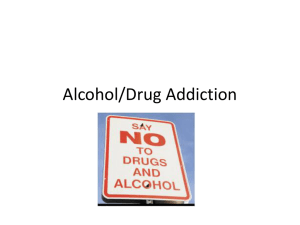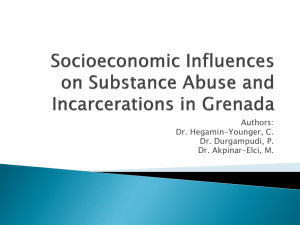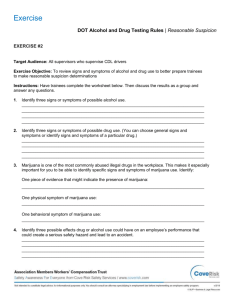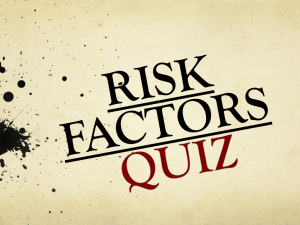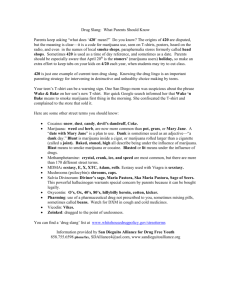Ch. 22 Questions Lesson 1 Explain what substance abuse means
advertisement
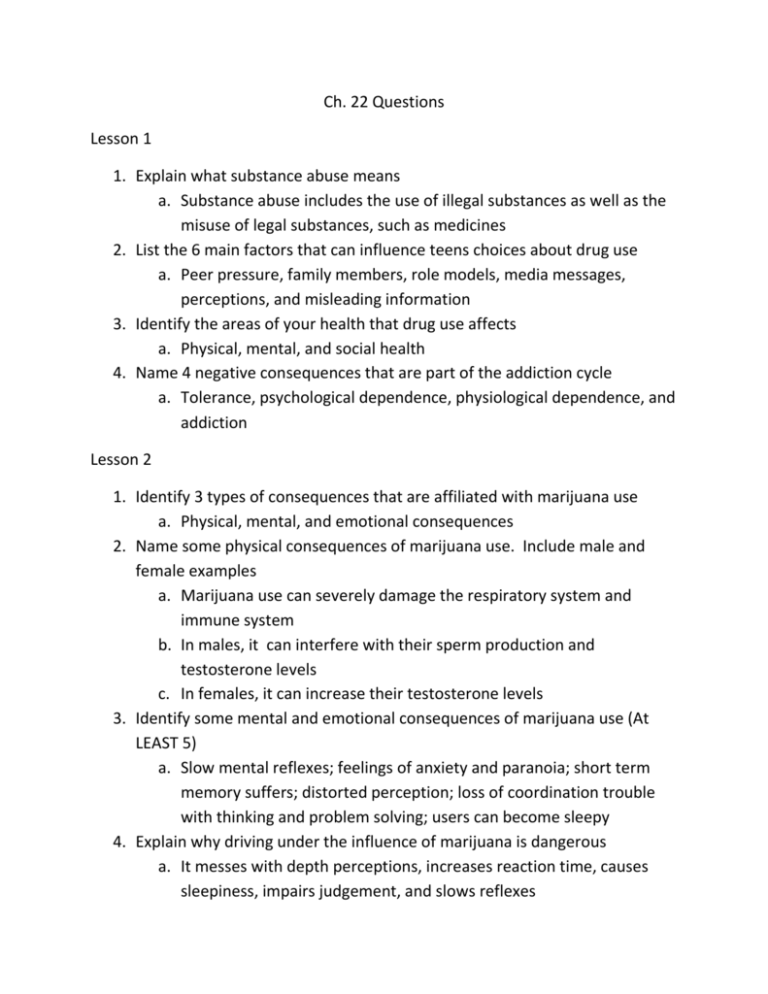
Ch. 22 Questions Lesson 1 1. Explain what substance abuse means a. Substance abuse includes the use of illegal substances as well as the misuse of legal substances, such as medicines 2. List the 6 main factors that can influence teens choices about drug use a. Peer pressure, family members, role models, media messages, perceptions, and misleading information 3. Identify the areas of your health that drug use affects a. Physical, mental, and social health 4. Name 4 negative consequences that are part of the addiction cycle a. Tolerance, psychological dependence, physiological dependence, and addiction Lesson 2 1. Identify 3 types of consequences that are affiliated with marijuana use a. Physical, mental, and emotional consequences 2. Name some physical consequences of marijuana use. Include male and female examples a. Marijuana use can severely damage the respiratory system and immune system b. In males, it can interfere with their sperm production and testosterone levels c. In females, it can increase their testosterone levels 3. Identify some mental and emotional consequences of marijuana use (At LEAST 5) a. Slow mental reflexes; feelings of anxiety and paranoia; short term memory suffers; distorted perception; loss of coordination trouble with thinking and problem solving; users can become sleepy 4. Explain why driving under the influence of marijuana is dangerous a. It messes with depth perceptions, increases reaction time, causes sleepiness, impairs judgement, and slows reflexes 5. Identify some immediate effects of inhalant use (At LEAST 5) a. Glassy stare, slurred speech, impaired judgement, nausea, coughing, nosebleeds, fatigue, lack of coordination 6. Identify some long term effects of inhalant use a. Inhalants depress the central nervous system and can lead to loss of brain cells; long term use can cause liver and kidney damage, blindness, brain damage, paralysis, cardiac arrest and death 7. Name the effects of steroids on all people, just males, and just females (At least 3 different examples of each) a. Both are weight gain, acne, high blood pressure, and liver and kidney tumors b. Males are shrinking of testicles, reduced sperm count, baldness, development of breasts, and increased risk for prostate cancer c. Females are growth of facial hair, baldness, changes in the menstrual cycle, and a deepened voice Lesson 3 1. Name the 4 groups of psychoactive drugs a. Stimulants, depressants, opiates, hallucinogens 2. List six types of club drugs a. Ecstasy, rohypnol, GHB, ketamine, methamphetamine, and LSD 3. Explain a stimulant and list 3 types a. Drugs that speed up the central nervous system; cocaine, crack, and amphetamines 4. Explain why depressants are dangerous a. Can slow heart and respiration rates and lower blood pressure 5. What are 2 types of depressants a. Barbiturates and tranquilizers 6. What is an hallucinogen and give 4 types a. Drugs that alter moods, impair judgement, and increase heart and respiratory rates; PCP, DXM, mushrooms, peyote 7. What is an opiate and name 4 types a. Highly addictive drugs that dull the senses; codeine, morphine, heroin and oxycodone Lesson 4 1. What is the BEST way to resist the pressure to use drugs a. To be fully committed to refusing drugs before they are offered 2. List 4 strategies that can serve as healthy alternatives to using drugs a. Hobbies, community activities, sports, school organizations 3. Identify four ways a teen can help a friend or family member deal with a drug problem a. Identify specific sources of help in the community b. Talk to the person when he or she is sober c. Listen to the persons response d. Offer to go with the friend or family member to a counselor or support group 4. List 4 types of drug treatment centers a. Outpatient drug free treatment, maintenance therapy, short-term treatment, therapeutic communities
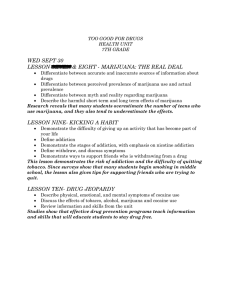

![[H1]Researching Society with MicroCase Online](http://s3.studylib.net/store/data/007737973_2-9d35b9e42208c660471ccaa373bd3b78-300x300.png)

